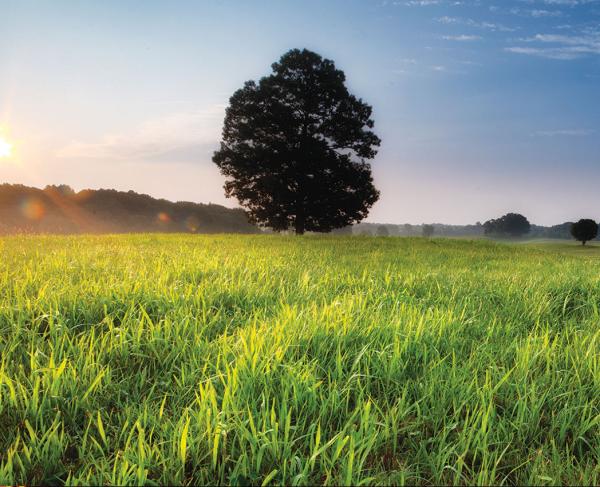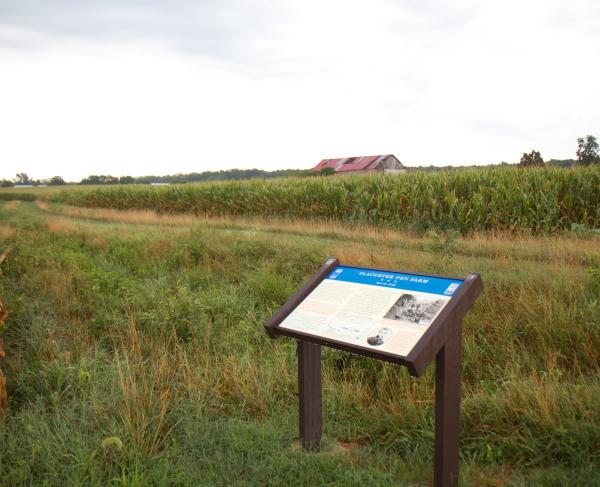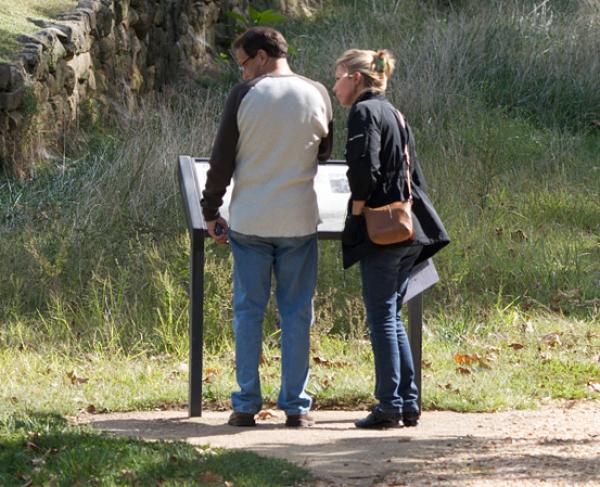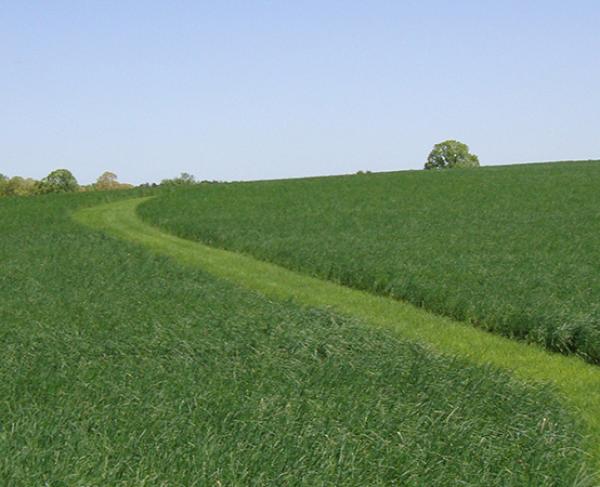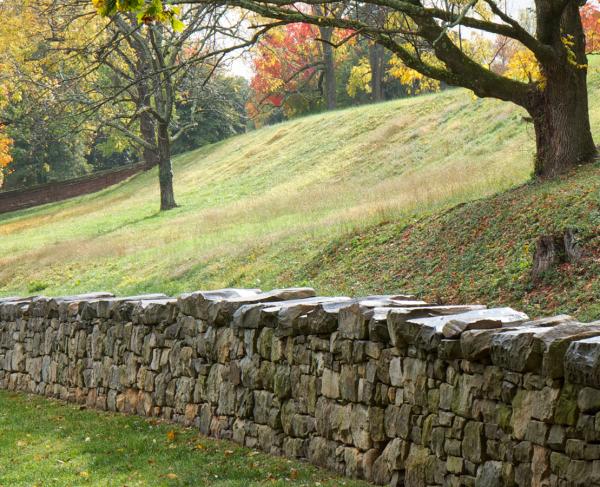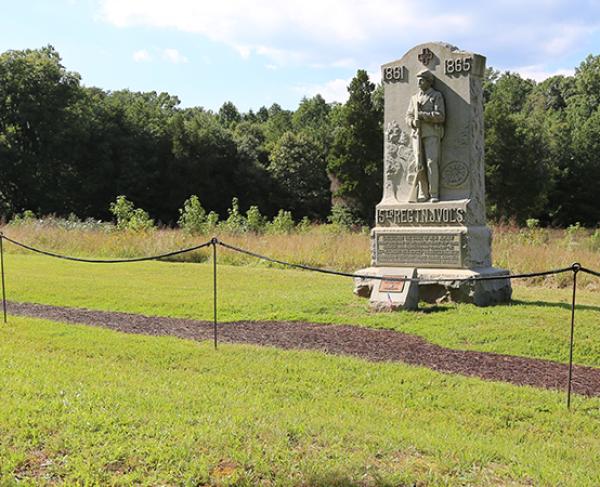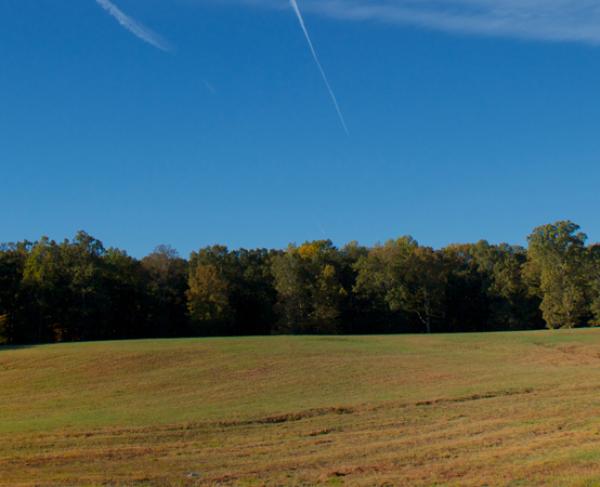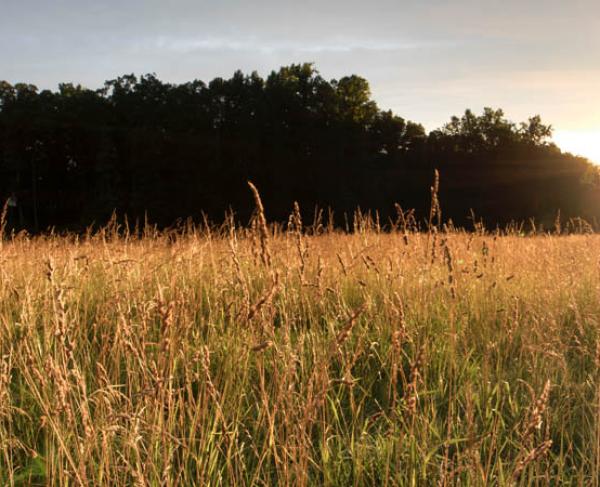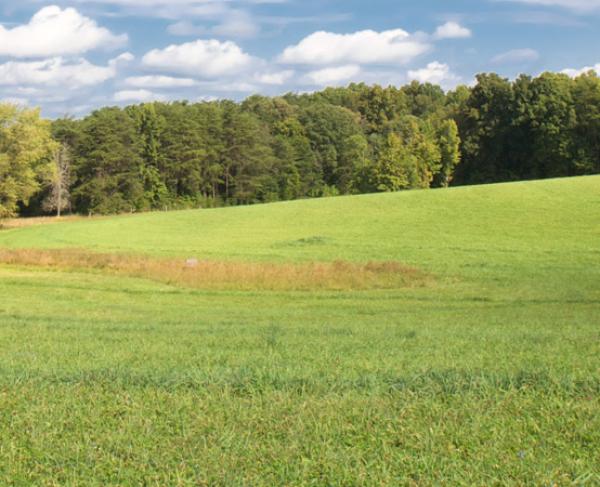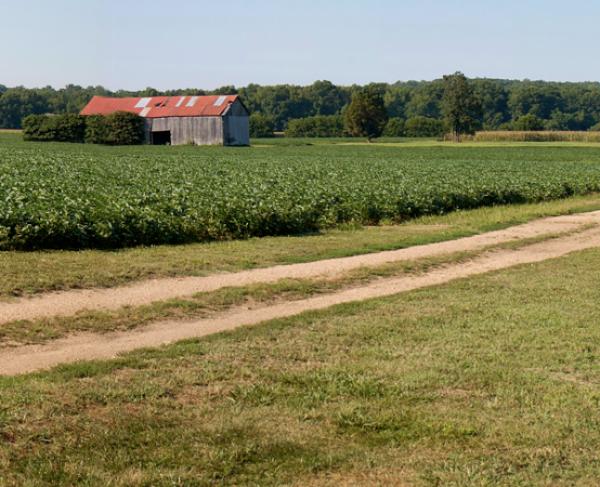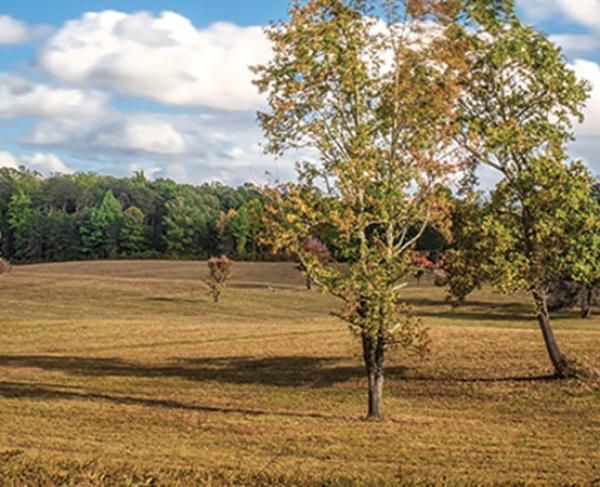Tour Fredericksburg-Area Battlefields in Three Days
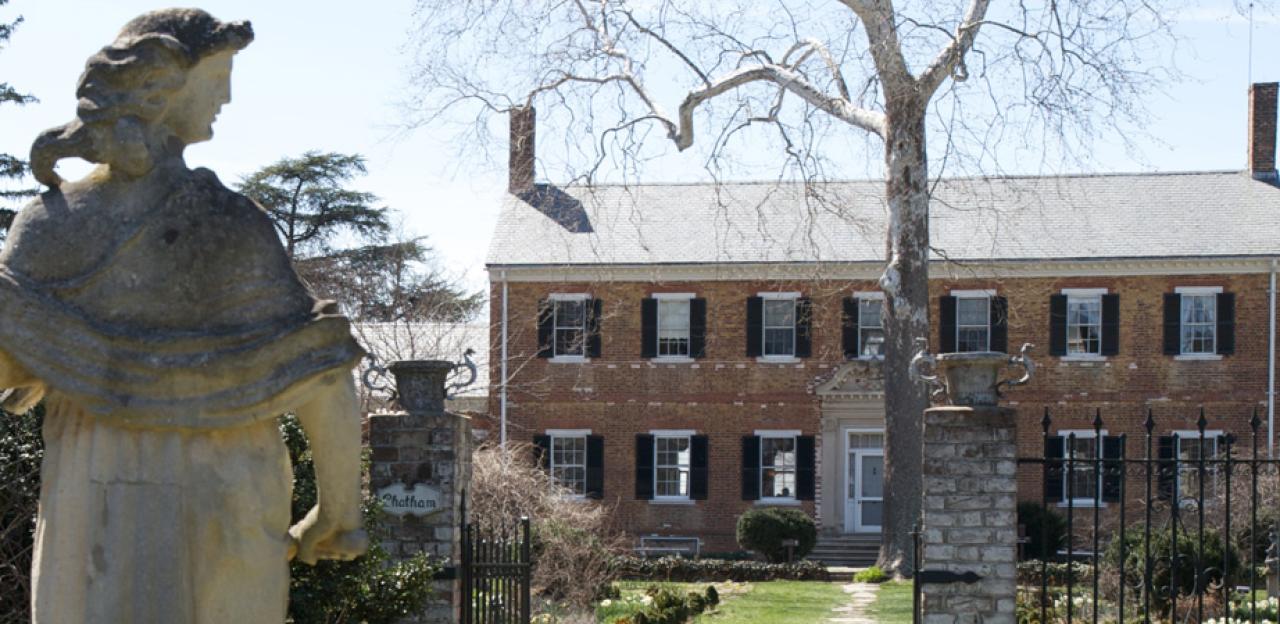
This national park was the site of four different battles that occurred over the span of 18 months and produced 100,000 casualties.
Before you go:
- Print or download the Tour Map.
- Watch the Fredericksburg Animated Map.
- Watch the Chancellorsville Animated Map.
- Watch the Overland Campaign Animated Map.
- Download the Fredericksburg Battle App, for more detail and touring assistance.
- Download the Chancellorsville Battle App, for more detail and touring assistance.
- Download the Overland Campaign Battle App, for more detail and touring assistance.
Stop #1 Fredericksburg Battlefield
Time: 4 hours
Details: www.nps.gov/frsp/index
The Battle of Fredericksburg was one of the most lopsided victory for Confederate General Robert E. Lee. From December 11-15, 1862, the Federal Army of the Potomac attempted to dislodge Lee's army from the fortified heights on the west and south sides of the city of Fredericksburg. Although the Federals did manage to breakthrough Lee's right flank, the success was short lived, and the Confederate position held strong for the remainder of the battle.
What to do:
Start at the National Park Service Visitor Center.
- Watch the 22-minute orientation film.
- Find out what Ranger Programs are scheduled
- See the exhibits and walk the historic Sunken Road.
- Stop by the Fredericksburg City Visitor Center to find out about all of the great local attractions.
Tour the battlefield. You have several options:
- Follow the NPS Auto Tour Route and get out and explore each stop.
- Purchase a touring CD from the bookstore.
- Use the Civil War Trust's free Fredericksburg Battle App on your smart phone.
Don't miss:
- The Sunken Road– The focal point of seven Federal assaults throughout December 13, Confederate soldiers from Georgia, North Carolina, South Carolina, and Virginia integrated an existing stonewall and well worn road into their defensive line, threw back every wave. By the end of the day some 30,000 Union soldiers attacked the Confederate line here, nearly 1 in 3 of those soldiers became a casualty.
- Chatham – This Georgian style plantation served as a Federal artillery platform, hospital, and headquarters. Famous visitors to the home include George Washington, Abraham Lincoln, Clara Barton, and Dr. Mary Walker.
- Upper Pontoon Crossing – Near 3:30 P.M. on the afternoon of December 11, 1862, Federal soldiers from Michigan and Massachusetts ferried themselves across the Rappahannock River and wrestled control of the city from Mississippi and Florida troops.
- The Slaughter Pen Farm – The site of one of the greatest preservation victories by the Civil War Trust, this 208 acre site witnessed vicious fighting on the afternoon of December 13. No less than five Federal soldiers were presented with the Medal of Honor for their actions in and around this field.
- Prospect Hill – Confederate artillery positioned on this hill was a main objective of the Union assault. Despite initially taking the position in a bloody assault, Union forces were driven off the hill, effectively ending the battle of Fredericksburg.
- Fredericksburg National Cemetery – The final resting place of 15,243 Union soldiers from the camps and four battlefields of the Fredericksburg area.
If you have time:
-
Visit Pelham's Corner, where the Alabama artillerist positioned his cannon, and enfaladed the Federal left flank.
- Take a battlefield hike on one of Fredericksburg's trails. See your NPS touring map for locations.
- Do what strikes your fancy. Fredericksburg is a battlefield on which you could spend countless hours and never do the same thing twice. Explore what interests you!
Insider tip: Carl's Frozen Custard is a local favorite.
Stop #2 Stafford Civil War Park
Time: 1 hour
Details: http://www.visitfred.com/listings/things-to-do/history/stafford-civil-war-park
The Stafford Civil War Park contains the winter encampment site of the Federal 11th Army Corps. The 11th Corps spent the winter of 1862-1863 in this vicinity. Soldiers built fortifications, bombproof, and winter huts to live in. The park tells the story of the often over looked story of the rebirth of the Army of the Potomac, during its "Valley Forge Winter."
What to do:
Start at the winter encampment tour stop.
- Walk through the winter encampment site.
- Drive through the park and stop at the bombproof and artillery emplacements.
- Hike the trails through the woods and read the interpretive markers.
Insider tip: Nearby Aquia Landing was a major supply base for the Federal Army during the winter of 1862-63; and was reportedly the fifth busiest port in the world during that time span.
Stop #3 Chancellorsville Battlefield
Time: 4 hours
Details: www.nps.gov/frsp/index
The Battle of Chancellorsville is regarded by many as Robert E. Lee's greatest victory. From April 29-May 6, 1863, Lee's army battled General Joseph Hooker's Federal Army of the Potomac around the wilderness crossroads of Chancellorsville. Although outnumbered more than 2-to-1, Lee split his undersized no less than three times in the face of a superior foe. Through daring and boldness Lee's men out fought and outmaneuvered Hooker's army. In the end Lee was victorious, but it came at a high cost. Nearly 22% of Lee's army lined the casualty list. The Confederates lost 64 of 130 regimental commanders. And Stonewall Jackson was wounded on the dark battlefield by his own men, and died of pneumonia on May 10, 1863. Chancellorsville was Lee's last offensive battlefield victory.
What to do:
Start at the National Park Service Visitor Center.
- Watch the 22-minute orientation film.
- Find out what Ranger Programs are scheduled
- See the exhibits and walk the "Wounding of Stonewall Jackson," trail.
Tour the battlefield. You have several options:
- Follow the NPS Auto Tour Route and get out and explore each stop.
- Purchase a touring CD from the bookstore.
- Use the Civil War Trust's free Chancellorsville Battle App on your smartphone.
Don't miss:
- First Day Battlefield — The Battle of Chancellorsville kicked into high gear on the late morning of May 1, 1863. Confederate forces under the commander of Stonewall Jackson, struck one of the three Federal columns marching toward the Confederate rear at Fredericksburg. In these open and rolling fields some two miles east of Chancellorsville, the two sides clashed. After a see-saw battle, the Federals turned back to Chancellorsville, giving Robert E. Lee and his army the initiative.
- The Chancellor House Site – The focal point of Lee's May 3rd offensive, the Chancellor home served as a Federal hospital and headquarters throughout the battle. The home was destroyed by fire during the battle. Rebuilt after the war, the home again was consumed by fire in 1927.
- Lee-Jackson Bivouac, where the two famous generals met for the last time.
- Catharine Furnace Ruins – In the antebellum days this region of Virginia was dotted with iron and gold furnaces, the stack of the Catharine Furnace is all that remains of a once prosperous furnace complex. During the Battle of Chancellorsville Stonewall Jackson's 29,000 man flanking column marched past the complex on the afternoon of May 2nd. In 1864 the complex was burned by Federal cavalry under the command of General George A. Custer.
- Jackson's Flank Attack Site – On the afternoon of May 2, 1863, the right flank of the Union Army was located in this vicinity. Near 5:15 P.M. the first wave of Stonewall Jackson's flanking column struck the unsuspecting Federals. Within hours the Union flank was no more and Stonewall Jackson lay wounded by his own men.
- Hazel Grove – This critical plateau served as an excellent spot for Confederate artillery to attack Union infantry on May 3, 1863.
- Fairview – Fairview was the backbone of the Federal defensive line at Chancellorsville. Captain Clermont Best placed some thirty cannon in this area, and repelled wave after wave of Confederate attacks. With ammunition running out and Joseph Hooker's leadership faltering, the Union cannoneers had no choice but to withdraw, leaving his vital piece of real estate in Confederate hands.
If you have time:
-
Visit Ellwood, the historic home on the adjacent Wilderness Battlefield served as a Union headquarters and hospital during the Battle of the Wilderness, and the amputated left arm of Stonewall Jackson is buried in the family cemetery.
- Take a battlefield hike on one of Chancellorsville's trails. See your NPS touring map for locations.
- Visit one of the many river-crossing along the Rapidan and Rappahannock Rivers.
- Do what strikes your fancy. Chancellorsville is a battlefield on which you could spend countless hours and never do the same thing twice. Explore what interests you!
Insider tip: The Chancellor family cemetery still sits in Fairview. Headstones mark the graves of twenty-eight people, although some family members are known to have been buried there without markers.
Stop #4 The Wilderness Battlefield
Time: 4 hours
Details: www.nps.gov/frsp/index
On May 5, 1864, the Union Army of the Potomac once again locked horns with the Army of Northern Virginia in the dense thickets known as the Wilderness of Spotsylvania. Over the course of two days, the two armies fought to a bloody stalemate, inaugurating a new era of violence in the war in the East. Though badly bloodied in the fighting, the Federals continued their march to the south.
What to do:
Start at the National Park Service Exhibit Shelter.
- Read the exhibit panels.
- Find out what Ranger Programs are scheduled
- Walk the "Gordon Flank Attack," trail.
Tour the battlefield. You have several options:
- Follow the NPS Auto Tour Route and get out and explore each stop.
- Purchase a touring CD from the Chancellorsville Battlefield bookstore.
- Use the Civil War Trust's free Overland Campaign Battle App on your smartphone.
- Watch the Overland Campaign animated map.
Don't miss:
- Ellwood – The historic home on the Wilderness Battlefield served as a Union headquarters and hospital during the Battle of the Wilderness, and the amputated left arm of Stonewall Jackson is buried in the family cemetery.
- Saunders Field – Woodland fires swept across this field during the battle, consuming the Confederate and Union soldiers who lay dying after bloody attacks and counterattacks across the field.
- Widow Tapp Farm – Union troops assaulted outnumbered Confederates on this field, but the Federal advance was checked by the arrival of Longstreet’s corps.
- Brock Road/Plank Road Intersection – For three days, this simple four-way intersection was the most important intersection in the Eastern Theater of the Civil War. By maintaining control of the intersection, the Federals held the inside track to Richmond. Desperate Confederate assaults failed to dislodge the Union soldiers.
If you have time:
-
Longstreet’s Wounding – Visit the spot where Longstreet was grievously wounded by friendly fire. He was unable to return to command for five months.
- Take a battlefield hike on one of Wilderness Battlefield trails. See your NPS touring map for locations.
- Visit one of the many river-crossing along the Rapidan and Rappahannock Rivers.
- Do what strikes your fancy. The Wilderness battlefield is a battlefield on which you could spend countless hours and never do the same thing twice. Explore what interests you!
Insider tip: In October of 1921, a Marine Expeditionary Force was marched from Quantico, VA. to the Wilderness Battlefield. The expeditions leader, General Smedley Butler, the recipient of two Medals of Honor, showed how Civil War battlefields could be used as classrooms and training facilities for the United States Armed Forces. Butler even invited President Warren Harding to attend. Harding drove himself to the battlefield and along the way got into a fender-bender with a local motorist. Neither were injured.
Stop #5 Spotsylvania Battlefield
Time: 4 hours
Details: www.nps.gov/frsp/index
Following the Battle of the Wilderness, Grant marched the Union army south with the hope of capturing Spotsylvania Court House. Lee's Confederates, however, managed to get ahead of the Federals and block the road. For the next two weeks, the two armies slugged it out in some of the fiercest fighting of the Civil War.
What to do:
Start at the National Park Service Exhibit Shelter.
- Read the exhibit panels.
- Find out what Ranger Programs are scheduled
- Walk the "Spotsylvania History Trail."
- Visit the Spotsylvania County Museum.
Tour the battlefield. You have several options:
- Follow the NPS Auto Tour Route and get out and explore each stop.
- Purchase a touring CD from the Chancellorsville Battlefield bookstore.
- Use the Civil War Trust's free Overland Campaign Battle App on your smartphone.
- Watch the Overland Campaign animated map.
Don't miss:
- Laurel Hill – Union General John Sedgwick was killed by a Confederate sharpshooter while examining the Federal artillery at this spot. He was the highest ranking U.S. officer killed in the war.
- Upton’s Attack – A daring attack led by a young Union officer, Emory Upton, successfully manipulated a weak point in the Confederate lines.
- Bloody Angle – The fiercest hand-to-hand combat of the war lasted for 20 hours at this site as Federal troops attempted to overwhelm the Confederate defenses.
- McCoull House – General Lee rode out to the front near this house, prompting his troops to cry “Lee to the rear!” in fear for his safety.
- Spotsylvania Court House — Spotsylvania's county seat is still a bustling courthouse complex today. While not the original wartime structure, the courthouse was reconstructed using some of the materials from the wartime building.
If you have time:
-
Massaponax Church – Some of the most famous photographs of the Civil War were taken from the windows of this church, as Ulysses S. Grant and George G. Meade met to plan their next move in the Overland Campaign.
-
Visit the Spotsylvania Confederate Cemetery.
- Take a battlefield hike on one of Spotsylvania Battlefield trails. See your NPS touring map for locations.
- Do what strikes your fancy. Spotsylvania is a battlefield on which you could spend countless hours and never do the same thing twice. Explore what interests you!
Insider tip: The battle of Spotsylvania Court House marked the first time that African-American troops, also known as U.S.C.T.'s, fought General Robert E. Lee's Army of Northern Virginia.
Stop #6: Mine Run Battlefield
Time: 1 hour
Details: Mine Run Battlefield
In late November 1863, Meade attempted to steal a march through the Wilderness and strike the right flank of the Confederate army south of the Rapidan River. Skirmishing was heavy, but a major attack did not materialize. Meade concluded that the Confederate line was too strong to attack and retired during the night of December 1-2, ending the winter campaign.
What to do:
- Walk the 1.5 mile battlefield interpretive trail, over a portion of the 690 acres that the Civil War Trust has saved at Mine Run.
Insider tip: The Federal failure at Mine Run, coupled with Ulysses S. Grant's victory at Chattanooga, gave Abraham Lincoln the confidence to promote Grant, and make him the overall commander of all Federal forces.
Stop #7: Cedar Mountain Battlefield
Time: 1 hour
Details: Cedar Mountain Battlefield
Confederate forces under Stonewall Jackson gained a narrow victory in this August 1862 battle, which gave Lee the advantage of shifting the war to Northern Virginia.
What to do:
- Walk a half-mile interpretive trail with signs on 150 acres of battlefield saved by the Civil War Trust.
Insider tip: Did you know that the cannon that sit on the Cedar Mountain Battlefield once sat on the Gettysburg battlefield. The cannon flanked Lee's Headquarters along the Chambersburg Pike, but once the Civil War Trust acquired the property, they refurbished the guns and moved them to Cedar Mountain.
Stop #8: Brandy Station Battlefield
Time: 2 hours
Details: Brandy Station Battlefield
In an effort to keep his army hidden from the Federals at the outset of the Gettysburg Campaign, Lee ordered his cavalry under the command of General J.E.B. Stuart to amass north of Culpeper, Virginia. Stuart's troopers were to screen Lee's army as they moved north into the Shenandoah Valley. However, Union cavalry commander General Alfred Pleasonton anticipated the move and struck Stuart’s men in camp at Brandy Station on the day the Confederate incursion was set to begin.
What to do:
- Walk the interpretive trail on a portion of the 2,159 acres of land saved at Brandy Station by the Civil War Trust.
- Visit the Kelly's Ford Battlefield and the John Pelham Marker.
- Visit the Museum of Culpeper History.
Insider tip: Famed Confederate John Pelham was mortally wounded on the nearby Kelly's Ford Battlefield. Although Pelham was an artillerist, he impetuously joined a Confederate cavalry charge, and was felled by a piece of artillery shrapnel. Monuments to Pelham stand on the Kelly's Ford and Brandy Station battlefields.
Related Battles
12,500
6,000
17,304
13,460
17,000
13,000
18,399
12,687
